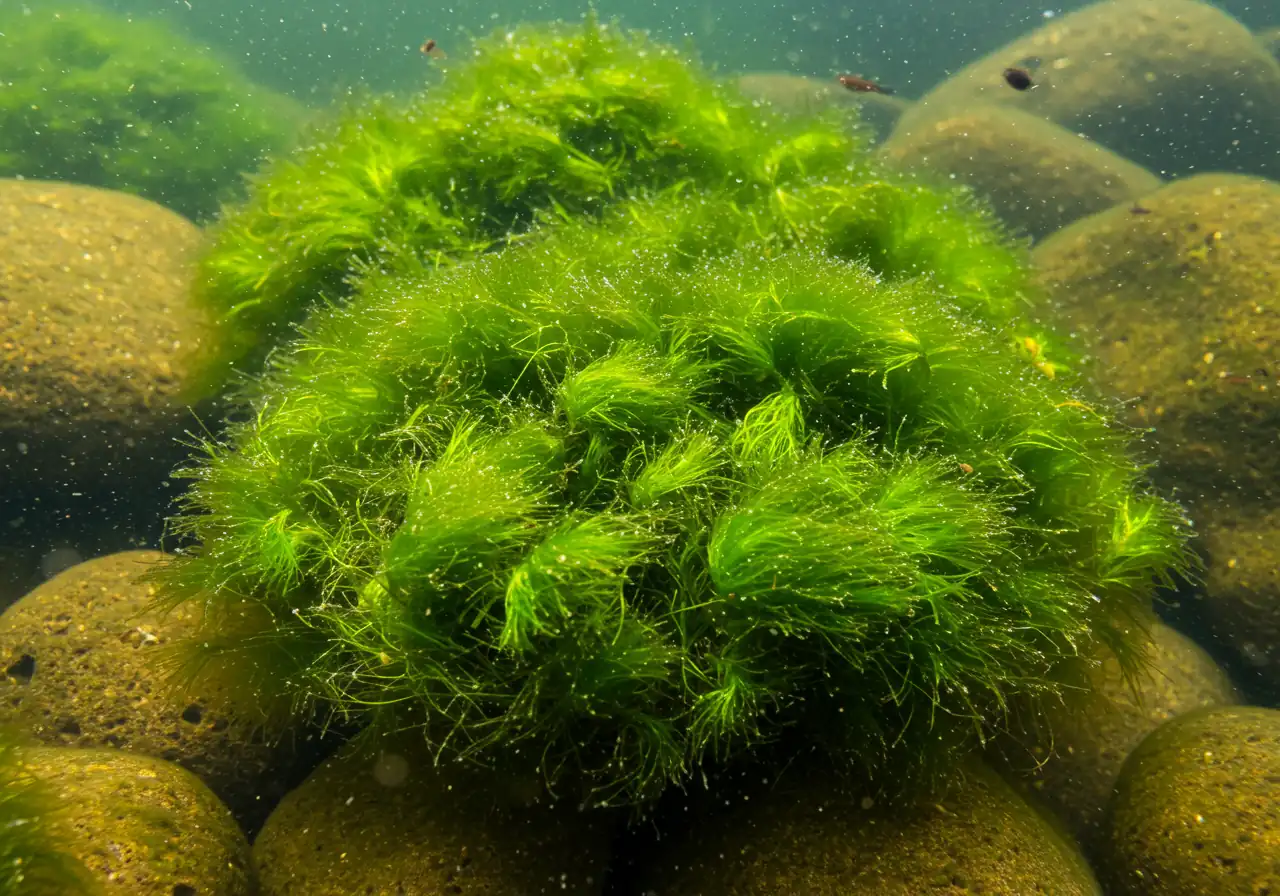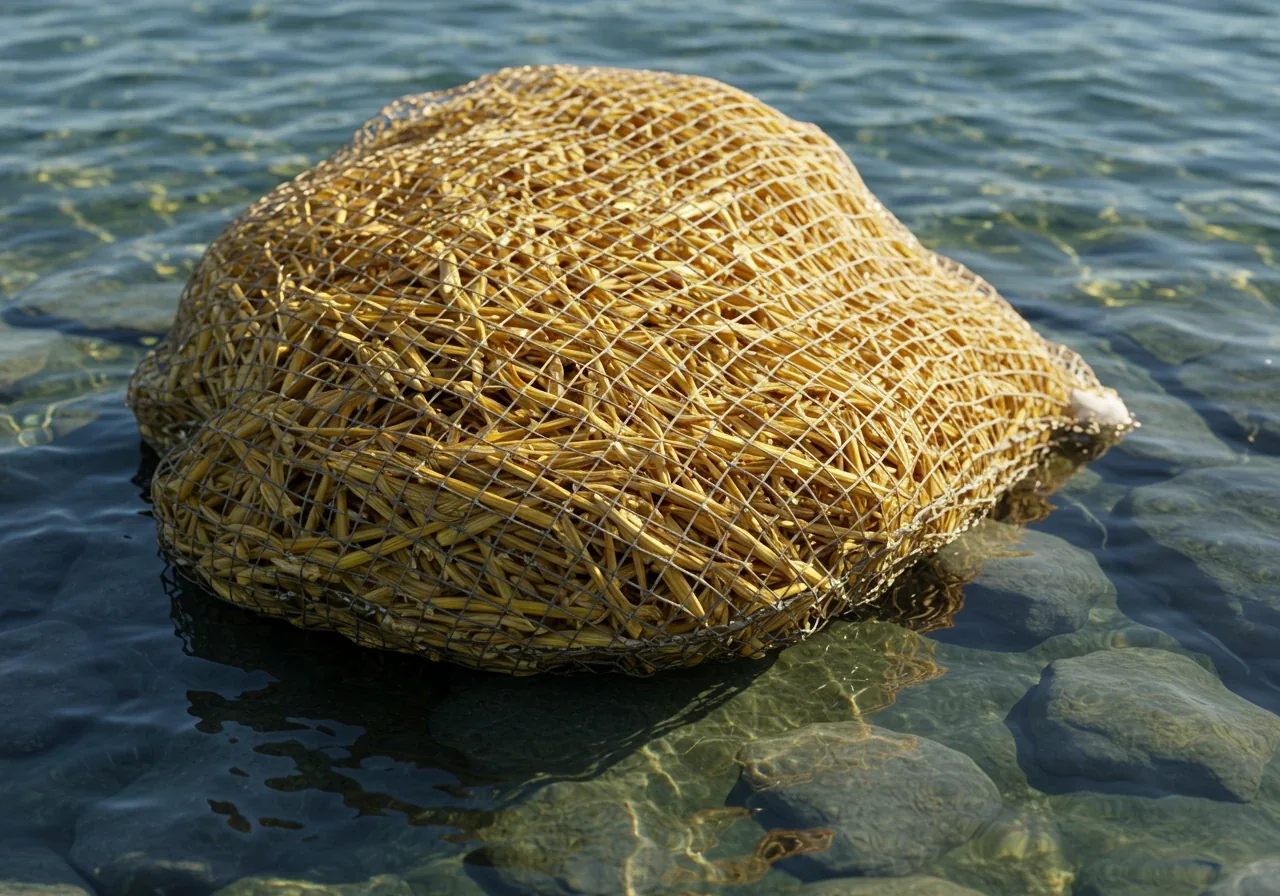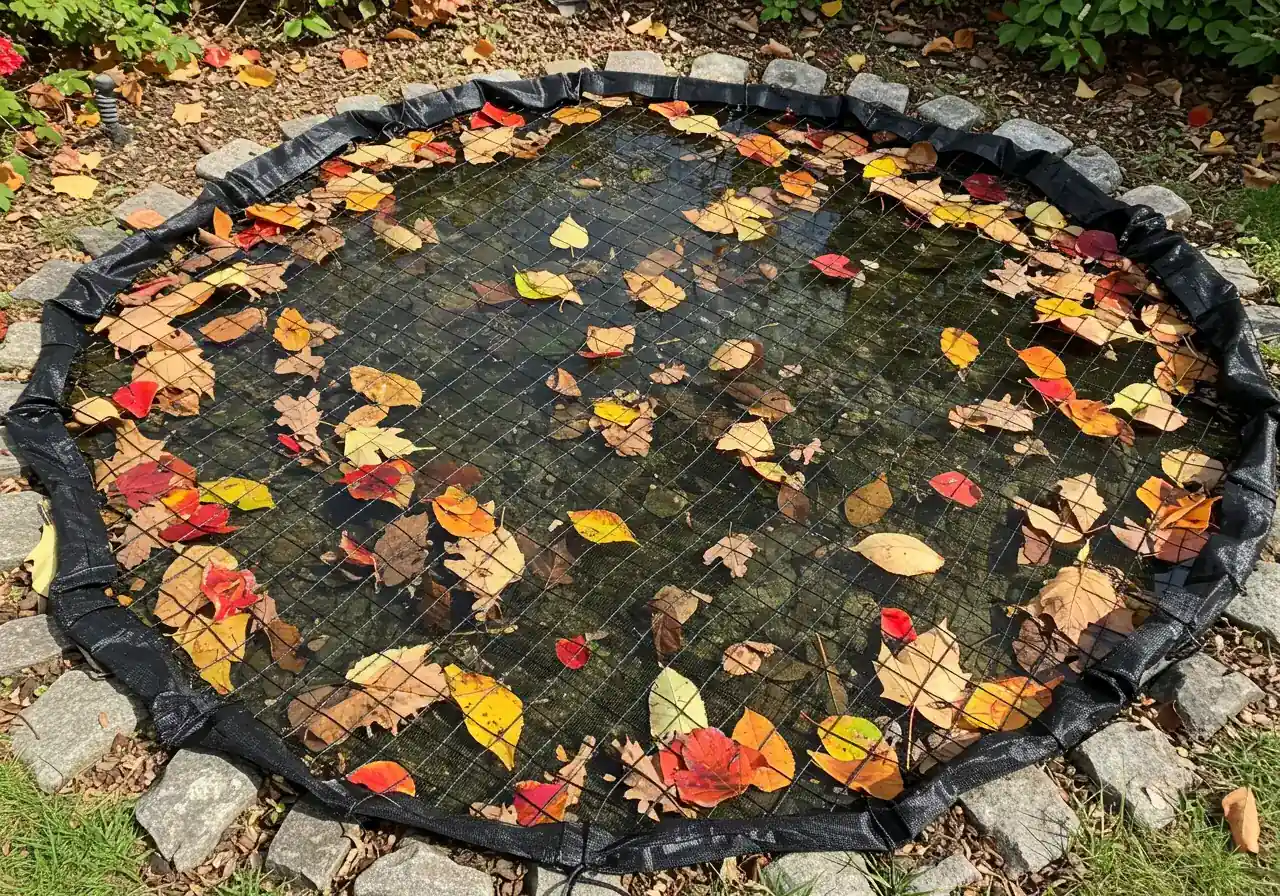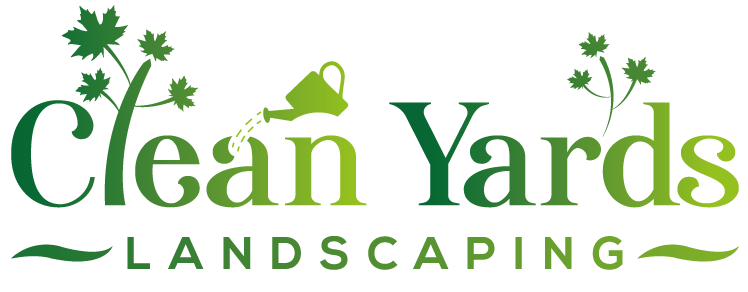Russell Ponds: Stop Summer Algae, Keep Water Clear (52)
Tired of battling pond algae? Let the experts handle it!
Request a Free Quote TodayQuick Guide to a Clear Pond:
- Reduce algae food sources: limit sunlight and excess nutrients (debris, runoff, fish waste).
- Maintain a balanced ecosystem: ensure proper filtration, aeration, and plant coverage (40-60%).
- Use natural controls: beneficial bacteria, barley straw, phosphate binders.
- Perform seasonal maintenance: crucial spring clean-up and fall leaf prevention.
- Troubleshoot smartly: check basics first, use UV clarifiers for green water, use algaecides cautiously as a last resort.
Introduction: Swamp Thing or Sparkling Oasis? Keeping Your Russell Pond Clear This Summer
Ah, the backyard pond! Is there anything better than relaxing beside your own little water feature, listening to the gentle trickle of a waterfall, and watching colourful fish dart among the aquatic plants? It’s a slice of paradise right in your own garden. Whether you're enjoying a beautifully maintained pond in Manotick or admiring one during a stroll in Greely, a clear pond is a true landscaping gem.
But let's be honest, summer in Russell can sometimes turn that sparkling oasis into something... less appealing. We're talking about the dreaded algae bloom – that green goo or murky water that makes you think Swamp Thing might actually be moving in! Fear not, fellow pond enthusiasts! Keeping your Russell pond clear and healthy throughout the summer is achievable.
This guide is packed with practical tips and easy-to-follow advice. We'll cover everything from balancing your pond's ecosystem with the right plants and filtration to simple maintenance tricks that prevent algae from taking over. Get ready to reclaim your backyard paradise and keep that water sparkling all season long! Need help beyond ponds? Check out our full range of landscaping and cleanup services.
Understanding the Green Menace: Why Algae Loves Your Ottawa Pond

So, your once-pristine pond is starting to look a bit... green? Don't worry, you're not alone! That "green menace," algae, is a super common visitor in backyard ponds across Ottawa, from Barrhaven to the edges of Metcalfe. But what exactly is it, and why does it seem to adore setting up shop in your water feature?
Think of algae as tiny, simple plants. They range from the frustratingly fuzzy "string algae" (or hair algae) that clings to rocks and waterfalls, to the microscopic kind that turns your whole pond into pea soup (planktonic algae). While a little algae is normal and even part of a healthy ecosystem, too much can become unsightly and even harmful to fish.
Algae isn't picky, but it does have a favourite recipe for growth, and unfortunately, Ottawa summers serve it up perfectly:
- Sunshine Galore: Algae photosynthesizes just like other plants. Our long, sunny summer days provide hours of fuel for algae growth, especially in ponds without enough shade from aquatic plants like water lilies or nearby garden shrubs. More sun equals more potential green stuff!
- A Nutrient Buffet: This is the big one! Algae thrives on excess nutrients, particularly nitrates and phosphates. It's like an all-you-can-eat buffet for the green goo. Where do these nutrients come from?
- Fish waste (especially if you overfeed your finned friends!)
- Decaying organic matter, like fallen leaves or dead plant bits left in the pond. Properly dividing overgrown aquatic plants and performing essential fall plant care before Ottawa winter helps reduce this major food source.
- Runoff from surrounding areas. After a heavy rain, water can wash lawn fertilizer or nutrient-rich soil (sometimes found near properties in areas like Osgoode) right into your pond. Using proper Russell lawn care techniques can significantly minimize fertilizer runoff getting into your water feature. Letting these nutrient levels get out of control is a fast track to algae issues, similar to the consequences of avoiding a neglected garden situation in spring. Learn more about general lawn care here.
- Warm Water Temperatures: Just like us, algae gets more active when things heat up. Ottawa's summer warmth speeds up algae's metabolism and reproduction rate. Faster growth = greener pond, faster!
Combine lots of sun, plenty of food (nutrients), and cozy warm water, and you've got an algae party waiting to happen right in your backyard landscape. Understanding these factors is the first crucial step to winning the battle against the green takeover. If algae issues feel overwhelming or you'd just rather relax by the water, remember that help is available through our professional pond maintenance services.
Prevention is Key: Creating an Algae-Resistant Pond Ecosystem
Okay, let's talk defense! Instead of constantly battling that green gunk, let's build a pond ecosystem that naturally resists algae invasions. Think of it as creating a fortress where algae just doesn't get the VIP invitation. It’s all about balance, a bit like perfecting your gardening technique.

Keep the Water Moving and Clean:
First up: filtration and aeration. These are your pond's dynamic duo.
- Filtration: A good filter system (sized correctly for your pond volume!) acts like the pond's kidneys, physically removing debris before it breaks down into algae fuel. It also provides surfaces for beneficial bacteria to grow, which help break down invisible pollutants.
- Aeration: Moving water is healthy water! Adding a waterfall, fountain, or bubbler increases oxygen levels. This is great for your fish and beneficial bacteria, but algae? Not so much. Well-oxygenated water helps prevent the conditions algae loves. Don't underestimate the power of splashing water – it's not just pretty, it's practical!
Plant Power: Nature's Filters and Competitors:
Aquatic plants are your secret weapon. They directly compete with algae for those tasty nutrients (nitrates and phosphates) and sunlight. Aim for about 40-60% plant coverage on the water's surface during peak summer. For Ottawa's climate (Zone 5a), choose hardy varieties. You can often find great options at local nurseries easily accessible from areas like Nepean or Barrhaven, or explore resources like the Friends of the Central Experimental Farm gardening tips for local plant advice.
Here’s a quick guide to plant types:
| Plant Type | Role | Examples (Hardy for Ottawa) |
|---|---|---|
| Submerged Plants (Oxygenators) | Absorb nutrients directly from water, provide oxygen, offer fish shelter. | Hornwort, Anacharis (Elodea canadensis - native) |
| Floating Plants | Shade water, absorb surface nutrients. | Hardy Water Lilies (*Nymphaea*), Duckweed (use sparingly) |
| Marginal Plants (Bog Plants) | Absorb nutrients from shallow edges, add beauty, blend pond into landscape. Consider mulching and edging nearby for a clean look. | Blue Flag Iris (*Iris versicolor*), Pickerel Rush (*Pontederia cordata*) |
Fish Friends: Don't Overdo It!
Fish add life, but too many (or overfeeding them!) create excessive waste, which is pure algae fuel. Stick to a sensible stocking level – a common guideline is one inch of fish per 10 gallons of water, but biological filtration capacity is the real limit. Feed high-quality fish food sparingly, only what they can consume in a few minutes.
Starve the Beast: Limit Nutrients
This is crucial. Algae needs food to grow, so cut off the buffet!
- Remove Debris: Regularly skim leaves, twigs, and grass clippings from the pond surface. Don't let organic matter sink and decay. Keeping the area around your pond tidy is key; sometimes a thorough property clean-up can make a huge difference in preventing debris from blowing in. A regular Russell yard cleanup service can also help maintain that buffer zone. We also serve nearby areas like Marionville and offer full Ottawa yard cleanup.
- Beware Runoff: Be mindful of lawn fertilizers near your pond. Rain can wash these nutrients right into the water. Create a small buffer zone (a berm or area with dense planting) around the pond edge. Ensuring you have a healthy, established lawn, perhaps through services like expert sod installation for a healthy lawn, can actually reduce loose soil and nutrient runoff compared to a patchy lawn.
Creating this balanced ecosystem takes a little planning, but the payoff is a beautiful, clear pond that’s less work in the long run. If setting up this balance feels overwhelming, remember professional help is available. Our team provides comprehensive pond care services designed to establish and maintain that crucial equilibrium. Seeing a pond transform from murky to magnificent often leaves clients deeply satisfied, a feeling sometimes shared via our customer feedback page. We also offer city yard cleanup and Ottawa property cleanup for overall tidiness. Prevention truly is the key to enjoying your sparkling backyard oasis all summer long!
Going Green (Without the Algae!): Natural & Eco-Friendly Algae Control

Okay, so prevention is awesome, but sometimes that sneaky green stuff still tries to crash the party. Before reaching for harsh chemicals, let’s explore some gentler, more natural ways to show algae the door. Think of it as nudging your pond back into balance, eco-style! These methods work *with* nature, not against it, keeping your fish, desirable aquatic plants, and the local Ottawa environment happy. You can learn more about our eco-conscious approach on our About Us page.
Call in the Microscopic Cavalry (Beneficial Bacteria)
These are naturally occurring, good-guy bacteria that act like tiny Pac-Men, gobbling up excess nutrients (like nitrogen and phosphates from decaying gunk) that algae would otherwise feast on. You can buy concentrated doses to boost your pond’s natural population. They are slow-acting but effective at maintaining clarity once established. Keeping the surrounding landscape tidy reduces the amount of debris falling in, giving these bacteria a fighting chance. Sometimes, a general clean-up, like a helpful city property cleanup service, can remove a lot of potential algae fuel before it even hits the water.
Barley Straw Power
This is an old-school farmer's trick! As barley straw slowly decomposes in oxygenated water, it releases substances that inhibit algae growth – think of it as a gentle algae deterrent. It won't kill existing algae, but it helps prevent new blooms.
How-To Use Barley Straw:
- Obtain barley straw (bales or loose in mesh bags).
- Place it in your pond where water circulates well (near waterfall/filter outflow).
- Use approximately 2-3 ounces of straw per 100 gallons of water.
- Replace every 4-6 months, before the old straw fully decomposes.
- Be patient; effects can take several weeks to become noticeable.
Lock Up the Buffet (Phosphate Binders)
Since phosphates are a major food source for algae, products designed to bind or precipitate phosphates can effectively starve it out. These are generally safe for fish and plants when used correctly. Reducing phosphate sources like fertilizer runoff is also vital. Proper expert lawn care practices minimize the amount of fertilizer washing away towards your pond.
Good Old-Fashioned Elbow Grease (Manual Removal)
Sometimes, you just gotta roll up your sleeves! Regularly netting out string algae or vacuuming sludge from the bottom makes a big difference. It removes both the algae *and* the nutrients locked within it. Think of it as targeted weeding for your pond. Keeping the edges clear, perhaps with assistance from a service like the Marionville yard cleanup service team, makes access for manual removal easier. We also offer Marionville garden clean up and Metcalf garden clean up.
Throw Some Shade (Naturally!): Pond dyes are non-toxic colorants (often blue or black) that tint the water. This limits sunlight penetration to the deeper parts of the pond, making it harder for submerged algae to photosynthesize and grow. It's like giving your pond cool sunglasses! Plus, it can give the water a lovely reflective quality.
Eco-Friendly Pondside Landscaping: What you plant *around* your pond matters too! Especially in areas near rivers like Kars or Manotick where runoff is a key consideration, smart gardening helps. Plant native shrubs and perennials near the pond edge to create a buffer zone. These plants help absorb nutrients from runoff before they reach the water. Avoid planting messy trees right next to the pond edge if possible. Establishing a dense, healthy lawn through methods like quality sod installation for Ottawa homes can also significantly reduce soil erosion and nutrient runoff compared to bare patches. Even communities slightly further out, like those benefiting from the Metcalf yard cleanup service, see the value in managing runoff through thoughtful landscaping. Find inspiration in our project transformations.
Using these natural and eco-friendly methods might take a bit more patience than chemical solutions, but the result is a healthier, more balanced pond ecosystem that’s safer for everyone and everything that enjoys it. Check out the City of Ottawa's guide on invasive species to ensure your plant choices are environmentally sound.
Your Ottawa Pond Care Calendar: Staying Ahead of Algae Seasonally

Living in Ottawa means experiencing distinct seasons, and guess what? Your pond experiences them too! Staying ahead of pond problems, especially that pesky algae, means adjusting your maintenance routine throughout the year. Think of it like seasonal gardening – different tasks for different times. Here’s a simple calendar to keep your water feature sparkling from the spring melt near Vernon to the crisp autumn days in Kenmore.
Spring Awakening (April - May)
Time to wake the pond! Focus on clean-up as ice melts. Remove netting, scoop out winter debris (prime algae fuel!). Inspect pump/filter before restarting (above 10°C). Add beneficial bacteria. Start feeding fish sparingly with cold-water food (above 10°C). Consider a city garden clean up service for surrounding areas.
Summer Vigilance (June - August)
Peak enjoyment, peak algae potential! Skim debris regularly. Top off evaporated water (use dechlorinator!). Ensure 40-60% plant coverage for shade/nutrient competition. Thinking of adding plants? Consider our garden install service. Feed fish wisely. Rinse filters as needed.
Fall Preparation (September - November)
Winter prep is crucial! Net the pond *before* heavy leaf fall – decaying leaves = spring algae fuel! Proper material selection for netting is key. Trim dying marginal plants. Decide on winter equipment storage/operation. Switch fish to cold-water food, stop feeding below 10°C. Understand our service process via the terms and conditions.
Winter Watch (December - March)
Mostly hands-off, but vital for fish. Keep a hole open in the ice with a de-icer/aerator for gas exchange (don't smash ice!). Minimize disturbance. Plan for next year – maybe review estimate feedback or contact us about ongoing maintenance.
Following this seasonal rhythm helps keep your pond ecosystem balanced and beautiful year-round, letting you spend less time fighting algae and more time enjoying your Ottawa oasis! Our Google Business Profile often features seasonal tips too.
Example: High sun & nutrients encourage algae, while good circulation & plant cover help prevent it.
Troubleshooting: When Green Water Strikes Back!
So, you've followed the advice, boosted your filtration, added plants, and *still* your pond resembles something Shrek would happily bathe in? Don't throw in the towel (or the pond net) just yet! Sometimes, despite our best efforts, that stubborn algae makes a comeback tour right in our Ottawa backyards. Let's put on our detective hats and figure out what might be going on.
First, revisit the usual suspects:
- Sunlight: Is your pond still getting blasted with direct sun for most of the day? Maybe those water lilies haven't spread out as much as hoped, or that nearby tree isn't providing the shade you expected.
- Nutrients: Are sneaky nutrients still getting in? Double-check for lawn fertilizer runoff, especially after heavy Nepean rains. Is there decaying gunk hiding in the bottom you missed? Even the type of soil used nearby matters; ensuring proper soil preparation for surrounding garden beds can minimize nutrient leaching. Consider a water test kit – check your pH, ammonia, nitrite, and *especially* phosphate levels. High phosphates are prime algae fuel!
- Oxygen & Circulation: Is your pump running effectively? Is the filter clogged, reducing water flow? Stagnant, low-oxygen water is an open invitation for algae.
Pro Tip: Water testing kits are invaluable for diagnosing stubborn algae problems. Knowing your phosphate levels, in particular, can guide your treatment strategy effectively!
If the basics seem okay, here are a few other tactics:
- UV Clarifiers: Think of these as bug zappers for microscopic algae. Water flows past an ultraviolet light that damages the algae cells, causing them to clump together so your filter can remove them more easily. Choosing the right size is important, much like thoughtful material selection for other landscaping projects. They target green water (planktonic algae) but won't eliminate string algae.
- Algaecides (Use with Extreme Caution!): Chemical treatments *can* work quickly, but they're often a temporary fix and can harm fish, beneficial bacteria, and desirable aquatic plants if misused. *Always* read and follow label instructions precisely, calculate dosage based on your *exact* pond volume, and ensure good aeration during treatment. Crucially, check local Ottawa or Russell bylaws regarding algaecide use in water features. Sometimes, applying treatments is best left to those offering a professional city garden maintenance service who understand the products and regulations. Consult resources like the Rideau Valley Conservation Authority for broader water health information.
Still stumped, or just tired of battling the green? If your pond problems persist, or if tackling a major clean-out feels like too much (like needing a full Marionville property cleanup service level of effort), it might be time to call in the cavalry. Check out our About Us page to learn how our experienced team can help diagnose the issue and get your pond back to being the sparkling jewel of your landscape.
Key Takeaways: Your Clear Pond Cheat Sheet
Alright, feeling a bit overwhelmed by all the pond talk? Think of this as your quick-reference guide, the highlight reel for keeping that water sparkling clear without needing a science degree! Here are the absolute must-knows for winning the war against algae in your Ottawa oasis:
- Starve the Green Monster: Algae *loves* eating! Its favourite foods are sunlight and excess nutrients (from fish waste, decaying leaves, lawn runoff). Less food = less algae. Keep things tidy around the pond – removing debris before it sinks is key. Think of it like preventative gardening for your water feature. Sometimes a broader tidy-up helps, similar to the work done by a Marionville property cleanup service which removes potential nutrient sources from the whole yard.
- Balance is Everything (Like Yoga, But Wetter): A healthy pond fights its own battles. Ensure good filtration (the pond's kidneys) and aeration (moving water = happy water). Add plenty of aquatic plants (aim for 40-60% surface coverage) to compete for nutrients and provide shade. Don't overstock or overfeed your fishy friends!
- Go Natural First: Before reaching for harsh chemicals, try eco-friendly options. Beneficial bacteria act like tiny cleanup crews, barley straw can gently deter algae, and phosphate binders lock up algae fuel. Even manual removal (netting out string algae) makes a huge difference. An overall clean yard, maybe handled by an Ottawa garden clean up service, reduces the muck getting *into* the pond in the first place.
- Seasonal Smarts are Key: Your pond care isn't static; it changes with Ottawa's seasons. Spring clean-up is crucial, summer requires vigilance against heat and sun, fall prep (especially netting against leaves!) prevents winter nutrient buildup, and winter needs an open ice hole for fish survival. Consistent effort is part of good garden maintenance.
- Troubleshoot Systematically: If algae strikes back, don't panic! Recheck the basics: too much sun? Sneaky nutrient source (like runoff near Nepean)? Filter clogged? A UV clarifier might help with green water, but use algaecides only as a last resort and with *extreme* caution, following all rules.
- Know When to Ask for Help: Sometimes, despite your best efforts, algae wins a round. Or maybe you'd just rather spend your weekends enjoying the view from your deck in Manotick instead of wrestling pond scum. If you're stuck or need expert advice, don't hesitate to reach out. Feel free to contact us – we're happy to help diagnose the problem and get your pond back to its beautiful best. (And when you do, check our Privacy Policy to see how we protect your information).
Ottawa & Russell Pond FAQs: Your Algae Questions Answered
Hey, that's a great question! Generally, our municipal water is safe *after* treatment. The main issue is chlorine or chloramine, added to make water safe for us humans, but harmful to fish and the beneficial bacteria your pond needs. *Always* use a dechlorinator (available at pond supply stores) before adding tap water. While tap water itself isn't a direct cause of massive algae blooms, it *can* sometimes contain phosphates, which act like fertilizer for algae. Using rainwater collected safely (not runoff from roofs treated with chemicals) is often a better choice for topping up your pond.
Oh boy, runoff can be a real party crasher for a clear pond! Think about it – rainwater washes everything downhill: lawn fertilizer, loose soil from garden beds, decaying leaves, grass clippings, even pet waste. All of that stuff breaks down into nitrates and phosphates, which are basically five-star meals for algae. Creating a buffer zone with plants around the pond edge can help soak up some of that runoff. You might also consider careful landscaping to gently redirect water flow. Keeping the surrounding yard very tidy is also key; reducing the amount of loose debris available to wash in, perhaps with help from a thorough Metcalf property cleanup service, can make a surprising difference.
Excellent thinking – using plants is one of the best natural ways to combat algae! You want hardy plants suited for our Zone 5a climate. For surface coverage and shade (which algae hates!), try hardy Water Lilies (like *Nymphaea odorata*). For the pond edges (marginals), Blue Flag Iris (*Iris versicolor*) and Pickerel Rush (*Pontederia cordata*) are fantastic native choices that soak up nutrients. Good submerged oxygenators include Hornwort (*Ceratophyllum demersum*), which directly competes with algae for nutrients in the water column. Check local nurseries, especially those serving areas like Manotick or Russell, for these hardy varieties or consult the Ontario Grow Me Instead guide for non-invasive options.
Barley straw is one of those classic pond tricks! Yes, it *can* help, but it's more of a gentle preventative than a cure-all, especially during peak summer heat. As it slowly decomposes in oxygenated water (so place it near your waterfall or aerator!), it releases compounds that inhibit *new* algae growth. It won't magically clear up a pond that already looks like pea soup, and it needs replacing every 4-6 months. Think of it as part of a larger strategy that includes good filtration, limiting nutrients, and maybe even seeking help from a dedicated Metcalf garden clean up service to ensure the surrounding area isn't contributing excess debris.
That's a super important question! Regulations regarding water treatments can exist, especially concerning potential runoff into storm drains or natural waterways, which is a key consideration in riverside communities like Manotick or Kars. While rules for self-contained backyard ponds might be less strict than for natural bodies of water, it's *always* best practice to check directly with the City of Ottawa or Russell Township websites or offices for the most current information before using any chemical algaecides (check Ottawa Water By-law section for potential guidance). Misuse can harm wildlife and pets. We always advocate for natural methods first. If you hire a professional service, ensure they are knowledgeable about local guidelines and how they handle client information, as outlined in our privacy policy details.
Absolutely, it helps more than you might think! Every leaf, grass clipping, or bit of loose soil that blows or washes into your pond becomes future algae food as it decays. Maintaining clean edges, perhaps through careful mulching and edging installation, creates a buffer zone. Regularly deadheading nearby flowers and pruning shrubs prevents petals and leaves from dropping in. It’s all part of good *gardening* hygiene that directly impacts pond health. A clean perimeter means fewer nutrients feeding that green slime!
Conclusion: Enjoy Clear Water and Happy Pond Life in Russell!
So there you have it! Keeping your backyard pond in Russell looking less like a science experiment and more like a sparkling paradise *is* totally doable. We've journeyed through understanding algae, building a balanced ecosystem with good filtration and plenty of aquatic plants, using nature-friendly solutions, and tackling seasonal maintenance. Remember, the key ingredients are starving out the algae by limiting nutrients and sunlight, keeping that water moving, and staying vigilant throughout the Ottawa seasons.
A clear, healthy pond isn't just gorgeous; it's a thriving habitat for your fish and a stunning focal point for your landscape, making those summer evenings in Russell or nearby Embrun truly special. It enhances your whole gardening experience!
Ready to ditch the green for good?
- Put these tips to work! Start implementing the strategies we've discussed and watch your pond transform.
- Need a helping hand? If you're short on time or just want guaranteed results, our professional pond maintenance team is ready to assist homeowners throughout Russell, Ottawa, and neighbouring areas like Osgoode, Greely, and Kenmore. We offer various property cleanup services to complement pond care.
- Get in touch today! Contact us to discuss your pond care needs and schedule a service. Let us handle the algae so you can simply relax and enjoy the view.

